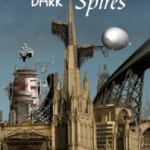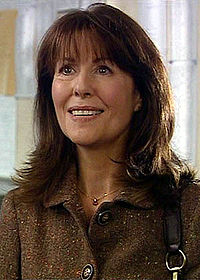The Paragraph
By a happy coincidence, since I wrote the basic outline of this a day or two ago, my fellow author Joanne Hall has posted this article on editing over at Writer Revealed.
ago, my fellow author Joanne Hall has posted this article on editing over at Writer Revealed.
It seemed particularly timely, since this week –and the last two or three weeks before that- I’ve done a lot of editing for Transtories (yes, the one without a cover, so I’ve used Andy Bigwood’s cover for Dark Spires).
I’ve probably spent about sixteen to twenty hours a week on the process, which might not sound a lot, four hours a day, but because of the concentration that it calls for, it’s probably one of the most tiring activities concerned with writing.
What’s I’ve drawn from this is that many semi-pro writers, those easing toward their first professional sale, are quite capable of writing fine turns of phrase, even individual sentences; where they struggle is to convey information through organization of paragraphs.
There are two theories of organizing paragraphs. The more basic one is that each character’s actions and speech should be separated and given a paragraph to themselves.
Then there is the Chip Delany view, that the paragraph is the unit of emotional currency, and that it’s okay to group related activities together.
When I looked through my various books on writing this morning (Damon Knight’s Creating Short Fiction; Kate Wilhelm’s Storyteller; Orson Scott Card’s Characters & Viewpoint; Steve May’s Doing Creative Writing) none of them -that’s none, note- have an entry on paragraphs.
I find that significant. Are budding writers supposed to learn by osmosis? I’m all for learning by example, but it helps to know the theory.
So, with the agreement of one of the contributors to Transtories, I have selected a short story at random and reprinted a paragraph from it, and then edited it. It’s my opinion only, and will probably vary from day to day, but it’s a useful exercise to perform.
This is the first version:
Settling back into the polished leather, she pulled her small, rough purse nearer, giving it a reassuring pat in the process. A wedding present from her uncle, its texture felt comforting, the familiarity soothing. The cab smelled damp, its dim illumination cast by two oil lamps making the purse look dowdy and old. The memory of her uncle brought forth a renewed desire to escape, and with mounting resolution she settled back as the coach moved off.
So here’s the summary of the series of actions.
1) She settles back in the seat.
2) She pats the purse.
3) Background on the purse
4) Description of the cab, smell, illumination etc
5) More on the purse
6) More on her uncle
7) She settles back in her seat (again)
Notice at least one action recurs – her settling back into the seat. If you have to repeat something -unless you’re doing it purposefully, for emphasis, it’s a sure sign that there’s something wrong with your paragraph structure. Notice how the author (and this is not intended to make them feel bad, I’m just as guilty during first drafts, and sometimes beyond) flits from purse to uncle to cab
And this is the same version after I’d edited it.
She gave her small, rough purse a reassuring pat. A wedding present from her uncle, its familiarity soothed her, although the lamplight made it look dowdy. Thoughts of her uncle loaned her bravery and she settled back into the polished leather as the coach moved off.
It’s 40% shorter, because all the elements are grouped together and flow logically one into another.
I may post more such entries, where I think that the standard textbooks are neglecting key points, but for the moment it’s a one off entry, but for any of you struggling with your writing, I hope that it helps.





